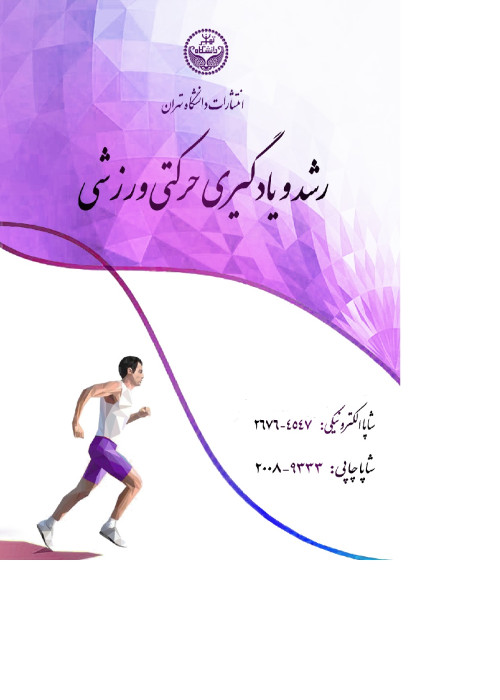The Relationship of Perception of Peer Motivational Climate, Stress and Weekly Training with Burnout in Elite Junior Athletes
Author(s):
Abstract:
The aim of the present study was to investigate the relationship of the perception of the peer motivational climate, stress and the weekly training with burnout in junior elite athletes of Kerman province. The statistical population consisted of 120 male elite athletes from Kerman province from individual and team sports (table tennis, karate, taekwondo, badminton, cycling, handball, volleyball, basketball, football) who continuously trained at Kerman championship gym in 1391 with the age range of 15–19 years and at least 4 years of experience of participating in a sport field with medals in Iran championships. 92 athletes were randomly selected using Cochran formula. To collect data, peer motivational climate questionnaire (Ntoumanis and Vazou, 2005), athlete's burnout questionnaire (Raedeke and Smith, 2001) and perceived stress scale (Cohen et al., 1983) were used. Finally, personal demographic forms were used to determine the weekly training hours, acquired positions, the duration of activity, age and sport field. To analyze the data, Pearson correlation coefficient, multivariate regression, scatter plot and independent t test were used. The results showed a negative and significant relationship between all peer motivational climate components (except for intra-team conflict) and all burnout components (P<0.05). There was a positive relationship between intra-team conflict and burnout but this relationship was not significant (P≥0.05). There was a positive and significant relationship between perceived stress and all burnout components (P<0.05). There was no significant relationship between weekly training hours and burnout and its components (P≥0.05). Also, there was no significant difference in burnout, perception of peer motivational climate, stress and weekly training hours between individual and team sports (P≥0.05). Finally, the statistical results for prediction of burnout showed that 47.7% of burnout could be explained by the perception of peer motivational climate, stress and weekly training. In addition, stress was the dominant predictor of burnout. The results showed that paying attention to the role of peers and controlling stress during burnout process can guarantee to decrease this phenomenon in junior elite athletes and can improve their performance and stability in sport.
Keywords:
Language:
Persian
Published:
Journal of Sports and Motor Development and Learning, Volume:6 Issue: 15, 2014
Pages:
57 to 74
magiran.com/p1270336
دانلود و مطالعه متن این مقاله با یکی از روشهای زیر امکان پذیر است:
اشتراک شخصی
با عضویت و پرداخت آنلاین حق اشتراک یکساله به مبلغ 1,390,000ريال میتوانید 70 عنوان مطلب دانلود کنید!
اشتراک سازمانی
به کتابخانه دانشگاه یا محل کار خود پیشنهاد کنید تا اشتراک سازمانی این پایگاه را برای دسترسی نامحدود همه کاربران به متن مطالب تهیه نمایند!
توجه!
- حق عضویت دریافتی صرف حمایت از نشریات عضو و نگهداری، تکمیل و توسعه مگیران میشود.
- پرداخت حق اشتراک و دانلود مقالات اجازه بازنشر آن در سایر رسانههای چاپی و دیجیتال را به کاربر نمیدهد.
In order to view content subscription is required
Personal subscription
Subscribe magiran.com for 70 € euros via PayPal and download 70 articles during a year.
Organization subscription
Please contact us to subscribe your university or library for unlimited access!


